Beo6
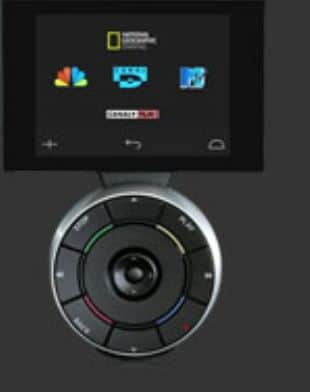

The Beo6 replaces the Beo5 and adds a wide screen which is touch sensitive rather than the pressure sensitive screen of the Beo5. Initially, little will seem different but once the BeoSound 5 Encore is released and the BeoSound 5 is updated, two way control including tag information and cover art will be enabled.
The communication is wireless via the router the BS5 Encore is connected to.
Please let us know
Available documents are listed, if none are listed then please reach out to see if we have them.
Please let us know

A statement in sound and sight.
Beosound A9 makes every musical moment rich, detailed and immersive – all from a seamless circular shape that blends in beautifully or stands out confidently.
Crafted from premium anodised aluminium, fabric and real oak, it’s a timeless work of art that can be customised to match your space and taste. When it’s time to dial up the volume, simply slide your finger gently across the top surface – and with a simple tap you can skip to the next or previous track and play/pause your music.
A9 stands strong on real oak legs, and delivers your music through acoustically calibrated covers. Ringed with precision-milled aluminium and backed by high-quality polymers, it forms an endless loop of engineering and art.
The shape is timeless, but the shade is yours to choose. A9 is a customisable centrepiece that adapts to your taste and space. Want a striking colour? You’re covered. Different legs? Swap them out. Personalise your speaker to chime with any room, and sing in any home.
Beosound A9’s iconic shape is designed to be displayed. From afar, it’s a minimalistic masterpiece. Up close, the details shine. Just like your favourite furniture, it stands apart in any room. And if you prefer it on the wall, it rises to the occasion. Enjoy beauty from every angle, whether you press play or not.
A9 works out where it is in the room to give you perfect playback, every time. Ensuring bass, mids and highs are never too overpowering or weak. Wherever you place it, it gives a standout performance. No muddiness. No fuzziness. Just pure, clean sound. As the artist intended.
When A9 plays, the whole room takes notice. Boasting volume that rivals much bigger speaker setups, it’s perfect for large spaces and get-togethers. Want a more immersive experience? Seamlessly connect A9 with other speakers to let the music flow through your home.
Time to entertain? Dial up the bass. A moment to relax? Level things out, like when it’s time for your favourite podcast. The B&O app gives you customisable sound, right in the palm of your hand.
Available documents are listed, if none are listed then please reach out to see if we have them.
Please let us know
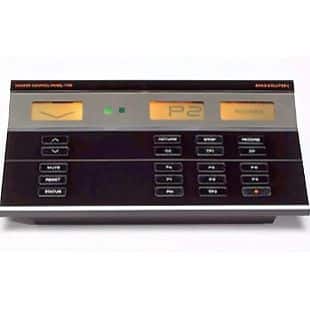
It can now be seen as the precursor to the Beosystem 5000 family though it was not as sophisticated as its descendants. It also had a back lit LCD display rather than the LED display used in the MCP 5000.
Please let us know
Available documents are listed, if none are listed then please reach out to see if we have them.
Please let us know
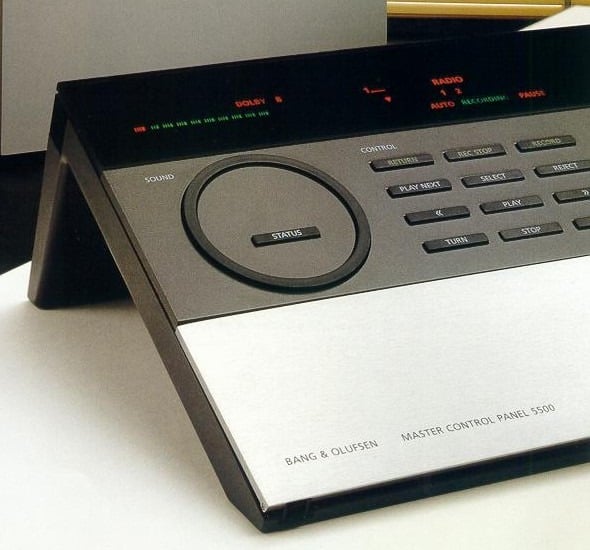
Unlike the MCP 5000, it used what were essentially Beolink 1000 codes but required an additional code to be sent by the Beomaster to allow two way control. Only the Beomaster 5500, 6500 and 7000 provided these signals so it was of limited value with other systems.
It was available in white to match the Whiteline 5500 system.
Please let us know
Available documents are listed, if none are listed then please reach out to see if we have them.
Type | Language | Type | |
User Guide | EN | Master Control Panel 5500 User Guide |
Please let us know
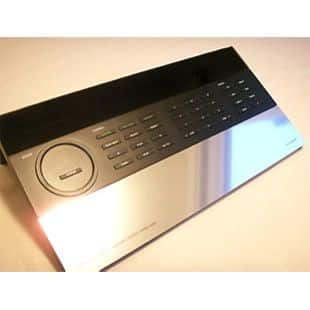
As with all the MCP panels, the LED display was greedy for power, and the D batteries did not last long if used regularly. The replacement, the Beolink 7000, made the move to rechargeable batteries as well as a far more advanced specification.
MCP 6500 was part of the BeoSystem 6500
Please let us know
Available documents are listed, if none are listed then please reach out to see if we have them.
Please let us know
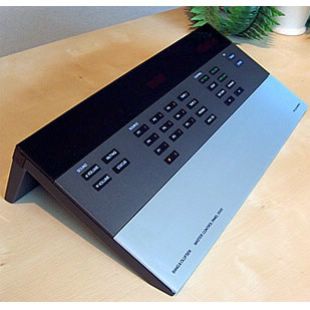
Two way control allowed the status of the system to be ascertained easily and complex timer programming was possible using the controls under the flip down panel.
The MCP 5000 could only be used with the Beomaster 5000 and could be part of a multi-room system allowing full control in a link room. MCP5000 will not operate any of the other systems such as the Beosystem 5500, 6500 and 7000.
Dimensions: 32 x 8 x 18cm
Display: Total
Radio programmes: 9FM or AM
Other programmes: PH-TP1-TP2-CD
Beocord Controls: 10
Beogram Controls: 6
VHS91 Controls: 8
Compact Disc Controls: Total
Programming: Timer + CD50
Volume Control: Yes, memory
Bass, treble: Yes, memory
Balance: Yes, memory
Muting: Yes
Status: Yes
Available documents are listed, if none are listed then please reach out to see if we have them.
Type | Language | Type | |
User Guide | EN | Master Control Panel 5000 User Guide |
Please let us know
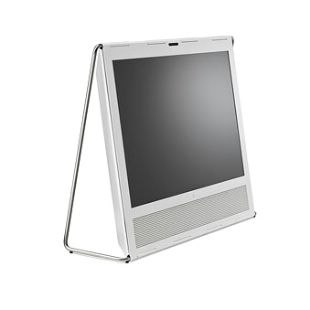
Customize your TV
Who says a black TV should always stay black. Give your BeoPlay V1 a twist of colour by changing the fabric sleeve behind the front grill. Grab your favourite among the four coloured sleeves and simply slide it in behind the grill. Now, all of a sudden, you have a completely new look. And don’t worry, you can always change to another colour later, if you want to make BeoPlay V1 fit a new room or a new style.
Adaptive contrast
The human eye has an amazing ability to adapt to different light conditions. We’ve been inspired by that ability and have built it into BeoPlay V1.
There’s a huge difference between watching the news in the middle of the day with bright light shining through the windows, and watching your favorite movie at night with the TV as the main source of light in the room. The BeoPlay V1 adaptive contrast uses a built-in light sensor and an advanced piece of software that will adjust not only the brightness, but the colours and image quality of your TV according to the surrounding light. In this way your eyes will not get tired of watching.
Dimensions: 95.3 x 70.9 x 5.2 cm
Weight: 26 kg
Cabinet: Black or white
Coloured fabric sleeve: Red, yellow, green and dark grey or silver
BASIC FEATURES
A 100/120 Hz edge-type LED-based
Connect to
>Set-top boxes, gaming consoles, Blu-ray players, Apple TV, NAS servers, hard disk.
Positioning
>Floor stand, upright table stand, wall bracket, ceiling bracket
YOU MIGHT WANNA KNOW
Customised picture and sound settings to different viewing and listening situations.
Possibility to connect extra speakers up to a full 5.1 surround sound setup.
Designer: Anders Hermansen
IN THE BOX
· BeoPlay V1
· Beo4 remote control
· Low floor stand
· Manual
Available documents are listed, if none are listed then please reach out to see if we have them.
Type | Language | Type | |
Wall Bracket | EN | BeoPlay V1-40 Wall-Bracket Type 4726-4737 | |
Wall Bracket | EN | BeoPlay V1-40 Wall-Bracket Type 4752-4753 | |
Service Manual | EN | BeoPlay V1-40 MKII Service Manual | |
Software Update | Version 1.0.11.37484 | BeoPlay V1-40 Software Update | |
Software Update Instructions | Version 1.0.11.37484 | BeoPlay V1-40 Software Update Instructions |
Please let us know
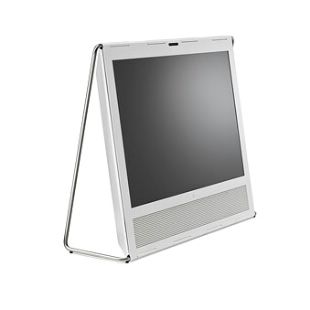
Customize your TV
Who says a black TV should always stay black. Give your BeoPlay V1 a twist of colour by changing the fabric sleeve behind the front grill. Grab your favourite among the four coloured sleeves and simply slide it in behind the grill. Now, all of a sudden, you have a completely new look. And don’t worry, you can always change to another colour later, if you want to make BeoPlay V1 fit a new room or a new style.
Adaptive contrast
The human eye has an amazing ability to adapt to different light conditions. We’ve been inspired by that ability and have built it into BeoPlay V1.
There’s a huge difference between watching the news in the middle of the day with bright light shining through the windows, and watching your favorite movie at night with the TV as the main source of light in the room. The BeoPlay V1 adaptive contrast uses a built-in light sensor and an advanced piece of software that will adjust not only the brightness, but the colours and image quality of your TV according to the surrounding light. In this way your eyes will not get tired of watching.
Dimensions: 76.6 x 56.8 x 5.5 cm
Weight: 18kg
Cabinet: Black or white
Coloured fabric sleeve: Red, yellow, green and dark grey or silver
BASIC FEATURES
A 100/120 Hz edge-type LED-based
Connect to
>Set-top boxes, gaming consoles, Blu-ray players, Apple TV, NAS servers, hard disk.
Positioning
>Floor stand, upright table stand, wall bracket, ceiling bracket
YOU MIGHT WANNA KNOW
Customised picture and sound settings to different viewing and listening situations.
Possibility to connect extra speakers up to a full 5.1 surround sound setup.
Designer: Anders Hermansen
IN THE BOX
· BeoPlay V1
· Beo4 remote control
· Low floor stand
· Manual
Available documents are listed, if none are listed then please reach out to see if we have them.
Please let us know
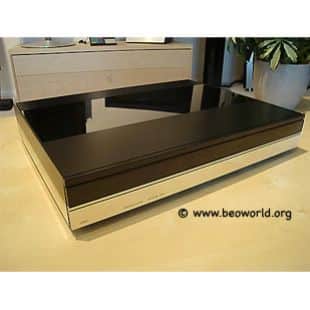
Beocord 7000 was a high-quality cassette recorder used specifically with Beosystem 7000. When playing cassettes, the order of the tracks could also be changed and the recorder could also find a specific track on a tape. Other functions included Auto Reverse, Auto Record levels, Dolby B and C as well as Bang & Olufsen’s recording system HX-Pro, which ensured that the sensitive treble range is captured in recording.
Beocord 7000’s features were supplemented by an abundance of special features. Space available precludes a more full description of elements such as the design of the peak programme meter, locally operated functions such as microphone recording, memo set/go, adjustment of the maximum record level and so on.
Main features:
* Auto record level
* Auto track search/auto reverse
* HX Pro
* Auto Dolby B-C
* Auto tape switch
* All operation available from Beolink 7000, with full display readout of track bar, counter, record level, Dolby NR, auto reverse functions, sequence programming etc.
Recording with Beosystem 7000 was a system feature, with benefits such as automatic signal routing, record lock, etc. Beocord 7000 contributed a lot to the convenience of the system and the unique auto record level was the feature that made remote controlled recording a real possibility – without compromising the quality of the recording. To further ensure a high and consistent sound quality level Beocord 7000 was equipped with HX Pro.
Auto record level is a unique Bang & Olufsen feature and ensures a uniform and optimal recording level from all sources, from tape to tape, without overload. Major benefits of auto record level are:
* all tapes recorded with auto record level have the same optimum level, without overload and therefore without distortion
* a recording can be started immediately and directly, without any pre-adjustments
* you do not have to supervise a recording to adjust record level and the system recording even stops the recording when the source runs out, or stops the source when the tape runs out
* if auto record level interferes and adjusts the recording it is done in such a way that it is not noticeable in playback. The dynamic range of the recording will not be impaired and the adjustments are carried out so early that overload is precluded.
The assets of auto record level are obvious when a comparison is made between those carried out on a standard recorder without auto record level and those with.
Recording on a standard recorder requires you to supervise the recording in order to step in if the manually set input level is too high. In this case you would have to adjust the record level down when a signal with a high dynamic content is to be recorded. If this is not carried out the tape will be overloaded and the music distorted. Without auto record level, copying is in real-time, which means that you will have to pay attention all the time you are recording (or risk a distorted recording). And when a very wide dynamic signal threatens to overload the tape being recorded, the record level must be lowered quickly, which will often be audible in subsequent playback, either as a suddenly lowered output volume or as a distorted signal because the record level was lowered too late.
Auto record level is an efficient remedy to this problem, without both disadvantages mentioned above. Primitive solutions reduce the record level when powerful signals are recorded and increase the record level when weak or no signals are recorded. The result can be a fluctuating dynamic range with, for example, pauses between tracks causing the recording level to rise dramatically and the noise level with it.
The auto record level in Beocord 7000 was monitored by the microcomputer interacting with the peak programme meter indicator on the front of the cassette deck. Auto Record Level only reduces the record level and only if the signals exceed the set value for a certain period. In this way brief noise pulses, such as the ones resulting from scratches on a record, do not lower the record level. When a signal of more than +2 dB above the set value is encountered, the microcomputer lowers the record level with 2 dB. The recording continues at the lowered level unless even louder signals appear and trigger new reductions.
Other advantages of auto record level are:
* it is applied to all sources, even if you record sound from a video source
* the preset values can be changed, e.g. if you use special tape formulas
* auto record level can be overridden while you are recording, or you can make a recording with manual adjustment of the record level
You did not have to pre-adjust Beocord 7000 before you started a recording. Another feature was the auto tape switch, i.e. an automatic adjustment to the three tape types, metal, chrome and ferro, by means of three electronic sensors located in the cassette holder. Auto-reverse was the default mode both in recording and playback, i.e. Beocord 7000 automatically continued the recording (and playback) on side two, when side one ran out. The turning time from side one to two was very short, because an optic sensor registered the lead-in tape and executed the 180 degree turning of the tape head immediately. Auto reverse could be cut out manually to protect side two from being recorded. This had to be done prior to record start.
Beocord 7000 featured track search, based on pauses between individual tracks. You could also make a sequence programming, operated just like CD. Track search was available no matter if the track was on side one or two of the tape. Even if you executed a manual TURN function (i.e. change playback direction) the microcomputer registered the turning point and if you selected a track after the turning point the search for this track would be initiated at the turning point. Track numbers could be displayed on Beolink 7000.
Another convenience was the Auto Dolby function. All tapes recorded on a Beocord 7000 contained inaudible information as to whether the tape was recorded with Dolby B, Dolby C or no Dolby noise reduction. The registration of noise reduction type was dynamic and in case the circuit registered a change during playback the reduction was automatically changed. If no signal was registered, e.g. on a pre-recorded tape, the noise reduction last selected would remain active, until altered manually (see more below).
Beocord 7000 was equipped with HX Pro, like all other ‘stackable’ Bang & Olufsen audio tape recorders. HX Pro is an acronym for Headroom Extension Professional and tapes recorded with HX Pro give a better reproduction quality on playback, no matter which tape deck they are played on. Both the dynamics and the the signal capability in the treble range is improved. The improvements are most noticeable in the reproduction of treble signals, but also the midrange will be influenced in a positive way. At 10KHz the signal loading capability is improved by approximately 8dB for chrome tape, 5dB for ferro tape and 3dB for metal tape formulas.
Beocord 7000 could ideally be used as part of Beosystem 7000.
Recording system HX PRO
Tape transport Auto reverse
Noise reduction Auto Dolby B-C NR
Frequency range chrome 30 – 18,000 Hz
Signal-to-nose ratio chrome Dolby B > 65 dB
Power supply:
4941 220V
4942 240V
4943 110V
4944 100V
4945 240V
Power consumption/minimum max. 19 W / 6 W
Dimensions W x H x D/Weight 42 x 7.5 x 32.5 cm / 8.35 kg
Cabinet finish: aluminium, white, black
Connections: Microphone DIN
Available documents are listed, if none are listed then please reach out to see if we have them.
Please let us know
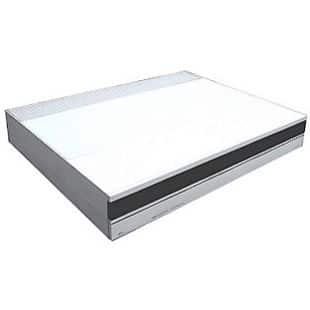
A light touch to the front of the Beocord 6500 cassette recorder released the loader which glided out slowly and silently in order to allow you to insert a cassette. You could use whichever type of cassette you prefer; or choose between Dolby B or C Noise Reduction systems… and rejoice in Bang & Olufsen’s patented HX-PRO recording system which ensured optimal sound reproduction, particularly in the difficult, high-frequency range. And, naturally, Beocord 6500 had auto-reverse so that both sides of the tape played as one.
Beocord 6500 could be used as part of the Beosystem 6500 hi-fi system.
One of the less-pleasant chores in making a recording is setting level control to its optimum position. Setting it too low raises the level of background noise on the recording. Setting it too high makes the recording distorted at high music levels. With this in mind, Bang and Olufsen introduced an automatic record mode which was called ‘Auto Record’.
Auto Record worked in two steps: when the record button was pressed for the first time, the cassette recorder went into a record pause mode, where the incoming signal was monitored. Under microprocessor control, the highest level was monitored and the record level was set at the optimum level for that music. On pressing the record button the second time, the tape was set in motion and the recording started, but continuing to make minor adjustments. If at any time during the recording, the level of music rose above the monitored level, the level control was lowered by exactly the amount required for the new optimum recording level.
This method of setting the level control closely imitated the action of a highly skilled recording engineer, if asked to set the level for a recording. It was the best that could be done when the full recording could not be monitored before recording started.
This feature incorporated a new method of monitoring the signal, which proved to be a more effective method over conventional methods. It was patented by the company with the patent number 158702.
Compact cassette C46-C60-C90-C120
Recording system: HX PRO
Tape transport system: Auto reverse
Search system Track numbers
Record level Auto Recording level
Noise reduction Auto Dolby B and C
Tape switch Auto. ferro/chrom/metal
Tape head Sendust
Wow and flutter DIN :<+/- 0.15%
Fast forward and rewind C60 75 sec.
Frequency range chrome
30 – 18,000 Hz +/- 3 dB
Signal-to-noise ratio metal Dolby NR
B: >66 dB, C: >73 dB
Signal-to-noise ratio chrome Dolby NR B: >64 dB, C: >74 dB
Signal-to-noise ratio ferro Dolby NR B: >62 dB, C: >72 dB
Power supply 100V – 240V
Power consumption Max. 25 watts
Dimensions W x H x D 42 x 7.5 x 32.5
Weight 8 kg
Connections: AUX IN 7 pin
Microphone DIN 0,3mV /3kohms
Audio Link
Available documents are listed, if none are listed then please reach out to see if we have them.
Please let us know